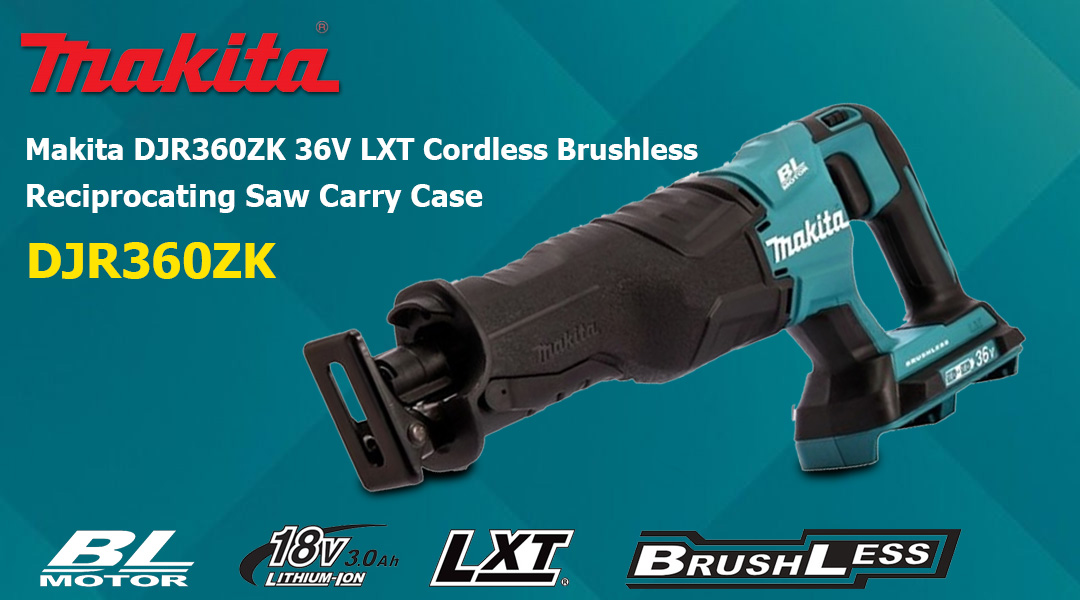Reciprocating saw is also called as Saber saw. It is used a lot in construction and demolition work. These are tough saws built to tackle rough, tough jobs and Makita’s reciprocating saw is a real workhorse. It will cut right through a variety of materials quickly and easily, such as drywall, wood, metal, plastic, PVC and more. A chuck on the tip of the saw allows you to use various types of chucks for different applications.
Types of Makita Reciprocating saw
- Makita JR105DZ 10.8V CXT Reciprocating Saw + 831373-8 Cube Tool Bag
- Makita DJR360ZK 36V LXT Cordless Brushless Reciprocating Saw Carry Case
- Makita DJR188Z 18V LXT Li-Ion Brushless Reciprocating Saw Body Only
- Makita DJR187Z 18V LXT Cordless Brushless Reciprocating Saw Body Only
- Makita DJR186Z 18V LXT Li-Ion Cordless Reciprocating Sabre Saw Body Only
- Makita DJR185Z 18V Cordless Mini Reciprocating Saw Body Only
- Makita DJR183Z 18V LXT Li-Ion Reciprocating Saw Body Only
Making an Indentation on Walls
When you are remodeling a unit and need to place wiring on the walls, you’ll need to make an indentation. A reciprocating saw is highly recommended when trying to do this, especially when the area includes odd angles.
Fitting a Window
This handy tool is also what professionals use to cut down or fit a window since it can work easily in those tight and uncomfortable places.
Cutting Through Different Materials
When cutting with a reciprocating saw, anything goes, especially since its area of use is so flexible. You can cut almost any material, like wood, PVC, or even metals.
Cutting Tree Branches
If you need to take down branches in your yard, this is the perfect tool for the job because of its durability and cutting power.
Safety Warning
- Anticipate problems when cutting into walls and floors where electrical wires, heating vents, and plumbing pipes may be present. Be especially careful with finished walls and floors—don’t cut through wires or pipes.
- Unplug the saw when changing blades and accessories.
- Always wear your safety glasses. Hearing protection is recommended when cutting metal.
- If the blade pulls out of a cut and the blade tip bangs into your material, it’ll cause the saw to buck violently. This can happen suddenly and pitch you off balance. Remember this when working on ladders.
- When cutting through pipes or wood, the blade can bend and cause the saw to buck. It’s like hand-sewing through a board that’s not supported under the cut—the saw stops cold. With a recipe saw, the blade may be stopped, but the tool keeps jerking back and forth.
- Blades generate plenty of heat. Just after making a cut, you can get a nasty burn grabbing the blade to change it.

